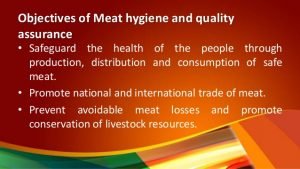Hygiene (Assurance of Health)

Introduction:
In this article I will discuses about Hygiene (Assurance of Health). Hygiene is a set of practices performed to preserve health. refers to conditions and Practices that help to maintain health and prevent the spread of diseases.” therefor Many people confuse the cleanliness with hygiene but hygiene is a broad term. Hygiene includes some practices that are considered good habits by the society. These include such personal habits or choices such as how frequently to take a shower or bathe, washing hands, trimming nails and change and wash clothes but It also includes the attention to keep the surfaces neat and clean e.g kitchen surfaces and your bedrooms etc. in this article, there will be the directions of how to achieve the hygiene.
Background:|Hygiene (Assurance of Health)
Hygiene is a concept related to cleanliness, health and medicine. In medicine and everyday life settings, hygiene practices are employed as preventative measures to reduce the incidence and spreading of disease. In the manufacturing of food, pharmaceutical, cosmetic and other products, good hygiene is a critical component of quality assurance. There are different types of hygiene that is medical hygiene, personal hygiene, public hygiene, home and every day hygiene etc.
Medical hygiene:
Medical hygiene includes such types of hygiene practices that administers to medicine and medical care to prevent diseases. These
practices include:|Hygiene (Assurance of Health)
Isolation of infectious persons and materials to prevent infection.
Sterilization of instruments used for surgical purposes.
Use of protective clothing such as gloves, masks, goggles, and apron etc.
Proper bandaging and dressing of injuries.
Safe disposal of medical waste
Disinfection of the things that are usable for next time e.g uniforms, pads etc
Scrubbing up, hand-washing, especially in an operating room, but in more general health-care settings as well, where diseases can be transmitted.
Home hygiene:|Hygiene (Assurance of Health)
Home hygiene pertains to the hygiene practices that prevent or minimize the spread of disease at home or on public transport, workplaces, and public places. Hygiene plays an important role in preventing the spread of infectious diseases. The main sources of infection in the home are people, food, water and domestic animals which are the main causes of microbial spreading or growth. The main “highways” for the spread of pathogens in the home are the hands, hand and food contact surfaces, and cleaning clothes and utensils. So to control the spread of microbes following points can help you out.
Mechanical removal
Mechanical removal (i.e., cleaning) using a soap or detergent. To be effective as a hygiene measure, this process must be follow by thorough rinsing under run water to remove pathogens from the surface.
Using a process or product that inactivates the pathogens in situ. Pathogen kill is achieved using a “microbicidal” product, i.e., a disinfectant or antibacterial product; waterless hand sanitizer; or by application of heat.
In some cases combined pathogen removal with kill is used, e.g., laundering of clothing and household linens such as towels and
bed sheets.
Hand washing: Hand hygiene is central to preventing spread of infectious diseases in home and everyday life. It is the washing of hands and nails with soap and water. In situations where water is not available a gel like alcohol containing hand sanitizer can be used.
Respiratory hygiene:
Following points help to attain respiratory hygiene:
Carry tissues and use them to catch coughs and sneezes.
Dispose of tissues as soon as possible.
Clean your hands by hand-washing or using an alcohol hand sanitizer.
Food hygiene:|Hygiene (Assurance of Health)
Food hygiene is concerned with the hygiene practices that prevent food poisoning. The five key principles of food hygiene are:
Prevent contaminating food with mixing chemicals, spreading from people, and animals.
Separate raw and cooked foods to prevent contaminating the cooked foods.
Cook foods for the appropriate length of time and at the appropriate temperature to kill pathogens.
Store food at the proper temperature.
Use safe water and raw materials.
Hygiene in kitchen, bathroom and toilet:
Following points is follow for this purpose:
Always clean the surfaces and sites of these places with a disinfectant.
Prevent the microbial spread by using phenol etc
Don’t keep the stagnant water.
Conclusion:
So, hygiene is possible with your a little more seek and care.




















+ There are no comments
Add yours